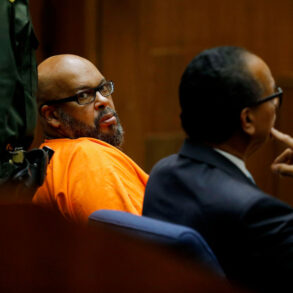
As a global phenomenon, hip-hop has traveled far and wide. The movement that took form in the streets of the Bronx reached even Madrid’s barrios and left its mark in more ways than one. But how exactly did hip-hop culture cross the Atlantic and take root in Spanish soil? Let’s rewind the tape and explore this interesting connection.
Hip-Hop’s Origin Story Starts in the Bronx
Way before topping charts and filling stadiums, hip-hop started as a raw, revolutionary sound echoing through the Bronx in the early 1970s. Back then, it was way more than just music. Hip-hop was kind of like a survival instinct for the marginalized youth, especially Black and Latino communities, to claim space and tell their stories in a creative way.
DJ Kool Herc, Grandmaster Flash, and others were spinning, MCs were battling, b-boys were flipping on cardboard, and graffiti artists were tagging subway cars. Through all of these creative vessels, hip-hop quickly became a full-blown cultural movement, giving a voice to the voiceless and starting something that will change the global music industry forever. Ever since Sugarhill Gang’s Rapper’s Delight, the first hip-hop record ever, dropped, the movement was on its way to slowly but surely take over the world.
The Movement Takes Root in Spain by the End of the 80s
As early as the 1980s, flights from New York to Madrid didn’t carry just passengers. Hip-hop enthusiasts brought mixtapes, breakdancing styles, and a whole lot of graffiti inspiration, all of which lit a spark in Spain’s youth that could relate to the messages of resistance and identity. Movies like Wild Style and Beat Street became cult classics, setting the stage for a revolution that was just as much cultural as it was musical.
El Club de los Poetas Violentos, translated to The Violent Poets Club, holds legendary status in the formative phase of Spanish hip-hop. Based in Madrid, this unique collective of visionary MCs and producers laid the foundation for the scene. The raw energy of the Bronx was definitely there, but there was also an interesting local twist. El Club de los Poetas Violentos released Madrid Zona Bruta in 1994, which is widely regarded as the first hip-hop LP ever recorded in Spain, and that’s where this story officially began.
The 2000s Marked the Golden Era of Spanish Hip-Hop
In many parts of the world, the 2000s are often regarded as the golden age of hip-hop, and Spain was no different. Across Spain, Violadores del Verso, Kase.O, Nach, and many other legendary names in the game helped expand the reach of the genre beyond the underground, gaining recognition not only in their own country but also in Latin America. These rappers had powerful storytelling and a vast musical background to tap into, resulting in raw verses that struck a chord with a rapidly growing fan base.
Madrid’s scene thrived with its own unrelenting energy, where hip-hop beats were pulsing through barrios, skate parks, and small venues packed with dedicated fans. Artists like Zenit, Guateque All Stars, Arma Blanca, and El Chojin helped shape the scene with sharp lyricism and socially conscious themes. Graffiti artists and breakdancers were also taking center stage, with spots like La Tabacalera becoming epicenters of urban art. Hip-hop was alive and well in Spain’s capital, and it won’t be going away anytime soon.
Madrid’s Modern Hip-Hop Scene Is Just as Vibrant
Today, Madrid’s hip-hop scene is more diverse and experimental than ever. While the more traditional approach of powerful beats and sharp lyricism still holds a loyal fan base, newer subgenres like trap and drill are more popular than ever. Names like Ergo Pro, Ill Pekeño, and Dano have carved out their own lanes, bringing introspective lyrics and gritty realism to the forefront.
It’s still more than just music, as well. Many artists and collectives continue to push the creative boundaries, merging hip-hop with visual art and fashion. The same rebellious spirit that gave birth to the culture is still there, only now, it speaks with even more voices and styles. Madrid’s hip-hop scene refuses to sit still, and it’s definitely not leaving the party anytime soon.
This Isn’t Just Flamenco Country Anymore
Hip-hop may have been born in the Bronx, but Madrid made it its own. The city has grown with the culture, never afraid to experiment to create something completely new. What started as a sound imported from New York became a powerful voice for identity and resistance. Now, it’s deeply ingrained in the city’s rhythm, becoming unmistakably Madrid.
This post was originally published on this site be sure to check out more of their content.






